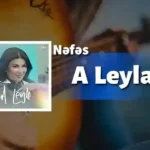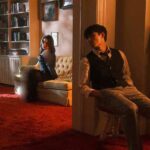برخی از شارحان نوشتند؛ این خطبه در شهر كوفه ایراد شد.
خداوند پديده هاى شگفتى از جانداران حركت كننده، و بى جان، برخى ساكن و آرام، بعضى حركت كننده و بى قرار، آفريده است،، و شواهد و نمونههایی از لطافت صنعتگری و قدرت عظیم خویش بپاداشته، چندان كه تمام اندیشهها را به اعتراف واداشته، و سر به فرمان او نهاده اند، ودرگوشهای ما بانگ براهین یكتایی او پیچیده است . آن گونه كه پرندگانِ گوناگون را بیافرید، و آنان را در شكافهای زمین، و رخنه درّهها و فراز كوهها مسكن داد، با بال های متفاوت و شكل و هیأتهای گوناگون،كه زمام آنها به دست اوست، پرندگانی كه با بال های خود در لابلای جوّ گسترده و فضای پهناور پرواز می كنند. آنها را از دیار نیستی در شكل و ظاهری شگفت آور بیافرید، و استخوانهاشان را از درون در مفصل های پوشیده از گوشت به هم پیوند داد . برخی از پرندگان را كه جثّه سنگین داشتند از بالا رفتن و پروازهای بلند و دور بازداشت، آن گونه كه آرام و سنگین در نزدیكی زمین بال میزنند. پرندگان را با لطافت قدرتش و دقّت صنعتش، در رنگهای گوناگون، با زیبایی خاصّی رنگ آمیزی كرد، گروهی از آنها را تنها با یك رنگ بیاراست كه رنگ دیگری در آن راه ندارد؛ دسته ای دیگر را در رنگ مخالف آن فروبرد، جز اطراف گردنشان كه چونان طوقی آویخته، مخالف رنگ اندامشان است. و از شگفت انگیزترین پرندگان در آفرینش، طاووس است، كه آن را در استوارترین شكل موزون بیافرید، و رنگهای پروبالش را به نیكوترین رنگها بیاراست، با بال های زیبا كه پرهای آن به روی یكدیگر انباشته و دُم كشیده اش كه چون به سوی مادّه پیش می رود، آن را چونان چتری گشوده و بر سر خود سایبان می سازد، گویا بادبان كشتی است كه ناخدا آن را برافراشته است. طاووس به رنگهاى زيباى خود مى نازد، و خوشحال و خرامان دم زيبايش را به اين سو و آن سو مى چرخاند، و سوى مادّه مى تازد، چون خروس مى پرد، و چون حيوان نر مست شهوت با جفت خويش مى آميزد، اين حقيقت را از روى مشاهده مى گويم ، نه چون كسی كه بر اساس نقل ضعیفی سخن بگوید: اگر كسی خیال كند؛ «باردار شدن طاووس به وسیله قطرات اشكی است كه در اطراف چشم نر حلقه زده و طاووس مادّه آن را می نوشد آنگاه بدون آمیزش با همین اشكها تخمگذاری میكند ». افسانه بی اساس است، ولی شگفت تر از آن نیست كه می گویند: «زاغ نر، طعمه به منقار ماده می گذارد، كه همین عامل باردار شدن زاغ است!. » گویا نی های پر طاووس چونان شانههایی است كه از نقره ساخته، و گِردیهای شگفت انگیز آفتاب گونه كه به پرهای اوست از زر ناب و پارههای زَبَرجد بافته شده است. اگر رنگهای پرهای طاووس را به روییدنیهای زمین تشبیه كنی، خواهی گفت دسته گُلی است كه از شكوفه های رنگارنگ گل های بهاری فراهم آمده است، و اگر آن را با پارچه های پوشیدنی همانندسازی، پس چون پارچههای زیبای پرنقش و نگار یا پرده های رنگارنگ یمَن است، و اگر آن را با زیورآلات مقایسه كنی، چون نگین های رنگارنگی است كه در نواری از نقره با جواهرات زینت شده است. طاووس، چون به خود بالنده مغرور راه می رود، دُم و بال های زیبایش را برانداز می كند، پس با توجّه به زیبایی جامه و رنگهای گوناگون پروبالش قهقهه سر می دهد، امّا چون نگاهش به پاهای او می افتد، بانگی برآورد كه گویا گریان است، فریاد میزند گویا كه دادخواه است، و گواه صادق دردی است كه در درون دارد، زیرا پاهای طاووس چونان ساق خروس دورگه (هندی و پارسی) باریك و زشت و در یك سوی ساقِ پایش ناخنكی مخفی روییده است. بر فراز گردن طاووس به جای یال، كاكلی سبز رنگ و پر نقش و نگار روییده، و برآمدگی گردنش چونان آفتابه ای نفیس و نگارین است، و از گلوگاه تا روی شكمش به زیبایی وَسْمِه یمانی رنگ آمیزی شده، یا چون پارچه حریر بَرّاق یا آیینه ای شفّاف كه پرده بر روی آن افكندند. در اطراف گردنش گویا چادری سیاه افكنده كه چون رنگ آن شاداب و بسیار می باشد، می پنداری با رنگ سبز تندی در هم آمیخته است که در كنار شكاف گوش جلوه خاصّى دارد. كمتر رنگى مى توان يافت كه طاووس از آن در اندامش نداشته باشد یا با شفّافیت و صیقل فراوان و زرق و برق جام هاش آنرا جلای برتری نداده باشد. طاووس چونان شكوفههای پراكنده ای است كه باران بهار و گرمای آفتاب را در پرورش آن نقش چندانی نیست، و شگفت آور آن كه هر چند گاهی از پوشش پرهای زیبا بیرون می آید، و تن عریان می كند، پرهای او پیاپی فرو میریزند و از نو می رویند، پرهای طاووس چونان برگ خزان رسیده می ریزند و دوباره رشد می كنند و به هم می پیوندند، تا دیگر بار شكل و رنگ زیبای گذشتۀ خود را باز می یابد، بی آن كه میان پرهای نو و ریخته شده تفاوتی وجود داشته باشد یا رنگی جابجا بروید. اگر در تماشای یكی از پرهای طاووس دقّت كنی، لحظه ای به سرخی گل، و لحظه ای دیگر به سبزی زَبَرجَد، و گاه به زردی زر ناب جلوه می كند. راستی، هوشهای ژرف اندیش و عقل های پُرتلاش، چگونه این همه از حقایق موجود در پدیدهها را می توانند درك كنند؟ و چگونه گفتار توصیف گران، به نظم كشیدن این همه زیبایی را بیان توانند كرد؟ و در درك كمترین اندام طاووس، گمانها از شناخت درمانده و زبانها از ستودن آن در كام مانده اند. پس ستایش خداوندی را سزاست كه عق لها را از توصیف پدیده ای كه برابر دیدگان جلوه گرند ناتوان ساخت، پدیده محدودی كه او را با تركیب پیكری پرنقش و نگار، با رنگها و مرزهای مشخّص می شناسد، باز هم از توصیف فشرده اش زبانها عاجز و از وصف واقعی آن درمانده اند! (حال چگونه خدا را میتوانند درك كنند؟.) پاك و برتر است خدایی كه در اندام مورچه، و مگس ریز، پاها پدید آورد، و جانداران بزرگتر از آنها، از ماهیان دریا، و پیلان عظی مالجثّه را نیز آفرید، و بر خود لازم شمرد، كه هیچ كالبد جانداری را وانگذارد و به درستی اداره اش نماید، جز آن كه میعادگاهش را مرگ و پایان راهش را نیستی قرار داد. اگر با چشم دل به آنچه كه از بهشت برای تو وصف كرده اند بنگری، از آنچه در دنیاست دل می كنی، هر چند شگفتی آور و زیبا باشد، و از خواه شهای نفسانی و خوشی های زندگانی و منظره های آراسته و زیبای آن كناره می گیری، و اگر فكرت را به درختان بهشتی مشغول داری كه شاخههایشان همواره به هم می خورند، و ریشه های آن در تودههای مشك پنهان، و در ساحل جویباران بهشت قرار گرفته، آبیاری می گردند، و خوشه هایی از لؤلؤ آبدار به شاخه های كوچك و بزرگ درختان آویخته، و میوه های گوناگونی كه از درون غلافها و پوششها سر بیرون كرده اند، سرگردان و حیرت زده می گردی. شاخههای پر میوه بهشت كه بدون زحمتی خم شده در دسترس قرار گیرند، تا چیننده آن هر گاه كه خواهد برچینَد، مهمانداران بهشت، گِرد ساكنان آن و پیرامون كاخهایشان در گَردشند و آنان را با عَسَل های پاكیزه و شرابهای گوارا پذیرایی كنند. آنها كسانی هستند كه همواره از كرامت الهی بهره مندند تا آنگاه كه در سرای ثابت خویش فرود آیند و از نقل و انتقال سفرها آسوده گردند. ای شنونده! اگر دل خود را به منظره های زیبایی كه در بهشت به آن میرسی مشغول داری، روح تو با اشتیاق فراوان به آن سامان پرواز خواهد كرد، و از این مجلس من، با شتاب به همسایگی اهل قبور خواهی شتافت. خداوند با لطف خود، من و شما را از كسانی قرار دهد كه با دل و جان برای رسیدن به جایگاه نیكان تلاش می كنند.
میگویم: (كلام امام كه فرمود «یؤرّ بملاقحه، الار » كنایه از نكاح و آمیزش است. هنگامی گفته می شود «ارالرجل المرأى یؤرها » كه با همسرش همبستر شود. و این فرمایش امام «كانه قلع داری عنجه نؤتیه » باید توجّه داشت «قلع » بادبان كشتی است و «داری » منسوب به «دارین » شهری است در كنار دریا كه از آنجا عطریات می آورند (و بادبانهایش معروف است) . و «عنجه » به معنی كشیدن به سوی خویش است، هنگامی كه گفته میشود «عنجت الناقه اعنجها عنجاً » یعنی آن را به سوی خود كشیدم. و «النؤتی » به معنی «كشتیبان » است. و اما تعبیر «ضفتی جفونه » منظور دوطرف پلكهای چشم است. زیرا «ضفتان » به معنی دو طرف می باشد و اینكه فرمود: «وفلذ الزبرجد » باید دانست كه «فلذ » جمع «فلذه » به معنی قطعه است كه معنی آن قطعه هایی از زبرجد است. امّا تعبیر به «كبائس اللؤلؤ الرطب » به معنی خوشه های لؤلؤتر همچون خوشه های خرما است، زیرا «الكباسه » به معنی خوشه و «العسالیج » جمع «عسلوج » به معنای شاخه است) .
Describing the wonderful creation of the peacock About the wonderful creation of birds
Allah has provided wonderful creations including the living, the lifeless, the stationary, and the moving. He has established such clear proofs for His delicate creative power and great might that minds bend down to Him in acknowledgement thereof and in submission to Him, and arguments about His Oneness strike our ears. He has created birds of various shapes which live in the burrows of the earth, in the openings of high passes and on the peaks of mountains. They have different kinds of wings, and various characteristics. They are controlled by the rein of (Allah’s) authority. They flutter with their wings in the expanse of the vast firmament and the open atmosphere. He brought them into existence from non-existence in strange external shapes, and composed them with joints and bones covered with flesh. He prevented some of them from flying easily in the sky because of their heavy bodies and allowed them to use their wings only close to the ground. He has set them in different colours by his delicate might and exquisite creative power. Among them are those which are tinted with one hue and there is no other hue except the one in which they have been dyed. There are others which are tinted with one colour, and they have a neck ring of a different colour than that with which they are tinted. About the Peacock The most amazing among them in its creation is the peacock, which Allah has created in the most symmetrical dimensions, and arranged its hues in the best arrangement with wings whose ends are inter-leaved together and whose tail is long. When it moves to its female it spreads out its folded tail and raises it up so as to cast a shade over its head, as if it were the sail of a boat being pulled by the sailor. It feels proud of its colours and swaggers with its movements. It copulates like the cocks. It leaps (on the female) for fecundation like lustful energetic men at the time of fighting. I am telling you all this from observation, unlike he who narrates on the basis of weak authority, as for example, the belief of some people that it fecundates the female by a tear which flows from its eyes and when it stops on the edges of the eyelids the female swallows it and lays its eggs thereby and not through fecundation by a male other than by means of this flowing tear. Even if they say this, it would be no amazing than (what they say about) the mutual feeding of the crows (for fecundation). You would imagine its feathers to be sticks made of silvers and the wonderful circles and sun-shaped feathers growing thereon to be of pure gold and pieces of green emerald. If you likened them to anything growing on land, you would say that it is a bouquet of flowers collected during every spring. If you likened them to cloths, they would be like printed apparels or amazing variegated cloths of Yemen. If you likened them to ornaments then they would be like gems of different colour with studded silver. The peacock walks with vanity and pride, and throws open its tail and wings and laughs admiring the handsomeness of its dress and the hues of its necklace of gems. But when it casts its glance at its legs it cries loudly with a voice which indicates its call for help and displays its true grief, because its legs are thin like the legs of Indo-Persian crossbred cocks. At the end of its shin there is a thin thorn and on the crown of its head there is a bunch of green variegated feathers. Its neck begins in the shape of a goblet and its stretch up to its belly is like the hair-dye of Yemen in colour or like silk cloth put on a polished mirror which looks as if it has been covered with a black veil, except that on account of its excessive lustre and extreme brightness it appears that a lush green colour has been mixed with it. Along the openings of its ears there is a line of shining bright daisy colour like the thin end of a pen. Whiteness shines on the black background. There is hardly a hue from which it has not taken a bit and improved it further by regular polish, lustre, silken brightness and brilliance. It is therefore like scattered blossoms which have not been seasoned by the rains of spring or the sun of the summer. It also sheds its plumage and puts off its dress. They all fall away and grow again. They fall way from the feather stems like the falling of leaves from twigs, and then they begin to join together and grow till they return to the state that existed before their falling away. The new hues do not change from the previous ones, nor does any colour occur in other than its own place. If you carefully look at one hair from the hairs of its feather stems it would look like red rose, then emerald green and then golden yellow. How can sharpness of intellect describe such a creation, or faculty of mind, or the utterances of describers manage to tell of it. Even its smallest parts have made it impossible for the imagination to pick them out or for tongues to describe them. Glorified is Allah who has disabled intellects from describing the creation which He placed openly before the eyes and which they see bounded, shaped, arranged and coloured. He also disabled tongues from briefly describing its qualities and also from expanding in its praise. The magnificence of the Creator in great and small creation Glorified is Allah who has assigned feet to small ants and gnats and also to those above them, the serpents and the elephants. He has made it obligatory upon Himself that no skeleton in which He infuses the spirit would move, but that death is its promised place and destruction its final end. A part of the same sermon Describing Paradise If you cast your mind’s eye at what is described to you about Paradise, your heart would begin to hate the delicacies of this world that have been displayed here, namely its desires and its pleasures, and the beauties of its scenes, and you would be lost in the rustling of the trees whose roots lie hidden in the mounds of musk on the banks of the rivers in Paradise and in the attraction of the bunches of fresh pearls in the twigs and branches of those trees, and in the appearance of different fruits from under the cover of their leaves. These fruits can be picked without difficulty as they come down at the desire of their pickers. Pure honey and fermented wine will be handed round to those who settle down in the courtyards of its palaces. They are a people whom honour has always followed till they were made to settle in the house of eternal abode, and they obtained rest from the movement of journeying. O’ listener! If you busy yourself in advancing towards these wonderful scenes which will rush towards you, then your heart will certainly die due to eagerness for them, and you will be prepared to seek the company of those in the graves straight away from my audience here and hasten towards them. Allah may, by His mercy, include us and you too among those who strive with their hearts for the abodes of the virtuous. Note explaining some of the wonderful and obscure portions of this sermon As-Sayyid ar-Radi says: In Amir al-mu’minin’s words “ya’urru bimalaqihihi”, “al-arr” implies “copulation”, e.g. when it is said “arra’r-rajulu al-mar’ata ya’urruha”, it means “He copulated with the woman.” In his words “ka’annahu qal`u dariyyin `anajahu nutiyyuhu”, “al-qal`” means the sail of a boat. “dari” means belonging to Darin which is a small town on the coast from where scents are bought. And “`anajahu” means “turned it”. It is said “`anajtun’n-naqata – like nasartu – a`najuha `anjan”. “When you turn the she-camel.” And “an-nuti” means sailor. His words “daffatay jufunihi” means edges of the eyelids, since “ad-daffatan” means the two edges. His words “wa filadhu’z-zabarjadi”: “al-filadh” is the plural of “al-fildhah” it means piece. His words “ka ba’isi’l-lu’lu’i’r-ratibi”. “al-kibasah” means bunch of dates. “al-`asalij” means twigs. Its singular is “`usluj”.
فایل صوتی فارسی مربوط به این خطبه را از لینک ذیل دانلود نمایید:
Download: Nahjul-Balagah-Sermon-165




































نظرات کاربران